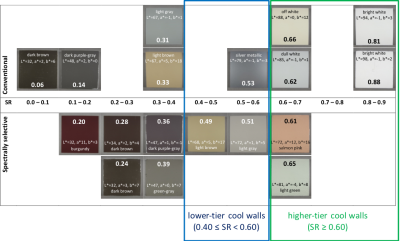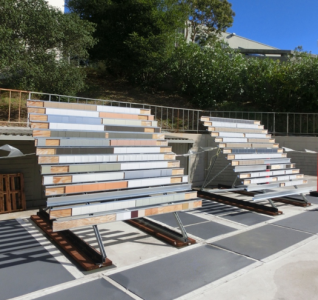Cool Walls
Cool Walls
Raising wall albedo (solar reflectance) lowers its surface temperature in the sun, reducing daytime heat flow into the building’s occupied space.
About

Raising wall albedo (solar reflectance) lowers its surface temperature in the sun, reducing daytime heat flow into the building’s occupied space. In the cooling season, this can save energy in an air-conditioned building, or make an uncooled building more comfortable. In the heating season, increasing wall albedo can also increase heating energy use, or make an unheated building less comfortable.
From 2015 to 2018, Lawrence Berkeley National Laboratory, the University of Southern California, the University of California at San Diego, and nine industrial partners explored cool wall benefits, technology, and infrastructure in a research project sponsored by the California Energy Commission’s Electric Program Investment Charge (EPIC).

Highlights
- Building energy simulations indicated that cool walls can save energy, lower utility bills, and reduce emissions in homes and commercial buildings across California and the southern half of the United States (ASHRAE climate zones 1 – 4).
- Climate simulations showed that increasing wall albedo throughout Los Angeles County by 0.4 would lower daily average outside air temperature in the “urban canyon” between buildings by about 0.2 °C (0.4 °F) in July. This is comparable to (about 84% of) the air temperature reduction provided by the same countywide increase in roof albedo.
- Appearance is a reasonable first indicator of albedo, in the sense that when conventionally pigmented, dark surfaces tend to have lower albedo and light surfaces tend to have higher albedo. Light-colored exterior wall paints are widely available. However, since about half of the radiation in sunlight arrives as invisible near-infrared (NIR) light, “cool color” (spectrally selective pigment) dark walls can offer albedo roughly halfway between that of a conventional dark wall and that of a light colored wall (Figure 1).
- Early results indicate that walls soil less than roofs. The research team has been naturally exposing wall materials at three sites in California (Berkeley, Fresno, and Los Angeles) since March 2016, and at three sites across the U.S. (Phoenix, AZ; Cleveland, OH; and Miami, FL) since August 2016. After 24 months of California exposure and 12 months of U.S. exposure, the albedos of a majority of the tested materials fell by about 0.00 - 0.05. A prior study found that field-applied roof coatings on near-horizontal substrates experienced first-year albedo losses of up to about 0.25.
For more information, please see our Cool Wall Application Guidelines1, poster, and California Energy Commission Energy Innovation Showcase page.
Notes
1Levinson R, et al. 2018. Solar-reflective “cool” walls: Benefits, technologies, and implementation. Appendix P: Cool wall application guidelines (Task 6.1 report). California Energy Commission.
.